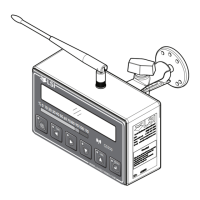4. Certification Notes 65
4.7 Certifications Used For Class 1 Division 1 And Division 2
Class 1, Division 1 certification (intrinsically safe) is available for most LSI sensors. Class 1,
Division 2 certification (non-incendiary) is available for the GS550 display.
Certificate CSA #1332949 on master contract 215780 is available on request.
Applicable CSA-certified requirements include:
• CSA Standard C22.2 No.0.4-M2004: Bonding and grounding of electrical equipment (protec-
tive grounding)
• CSA Standard C22.2 No.0-M1991: General requirements according to Canadian electrical
code Part II.
• CSA Standard C22.2 No.0142-M1987: Process control equipment
• CSA Standard C22.2 No.157-M1992: Intrinsically safe and non-incendive equipment for use in
hazardous locations
• CSA Standard C22.2 No.213-M1987: Non-incendive electrical equipment for use in class I,
division 2 hazardous locations
• UL Standard 508, 17
th
edition: Industrial control equipment
• UL Standard 913, sixth edition: Intrinsically safe apparatus and associated apparatus for use in
class I, II, III, division 1, hazardous (classified) locations (LS Series)
• UL Standard 913, seventh edition: Intrinsically safe apparatus and associated apparatus for
use in class I, II, III, division 1, hazardous (classified) locations (GS Series)
• UL Standard 1604, third edition: Electrical equipment for use in class I and II, division 2, and
class III hazardous (classified) locations.
4.8 ATEX Certifications
• EN 60079-0 : 2004 - Electrical apparatus for explosive atmospheres: General requirements
• EN 60079-11: 2007 - Explosive atmospheres – Part 11: Equipment protection by intrinsic
safety “i”
• EN 60079-26 Explosive atmospheres – Part 26: Equipment with equipment protection
level (EPL) Ga
Test Report: KEMA No. 211369200.
4.9 FCC and IC – Instructions to the User
This equipment has been tested and found to comply with the limits for a class B digital device,
pursuant to part 15 of the FCC Rules. These limits are designed to provide reasonable protection
against harmful interference in a residential installation. This equipment generates, uses, and can
radiate radio frequency energy and if not installed and used in accordance with the instructions,
may cause harmful interference to radio communications. However, there is no guarantee that
interference will not occur in a particular installation. If this equipment does cause harmful interfer-
ence to radio or television reception, which can be determined by turning the equipment off and on,
the user is encouraged to try to correct the interference by one or more of the following measures:
Reorient or relocate the receiving antenna.

